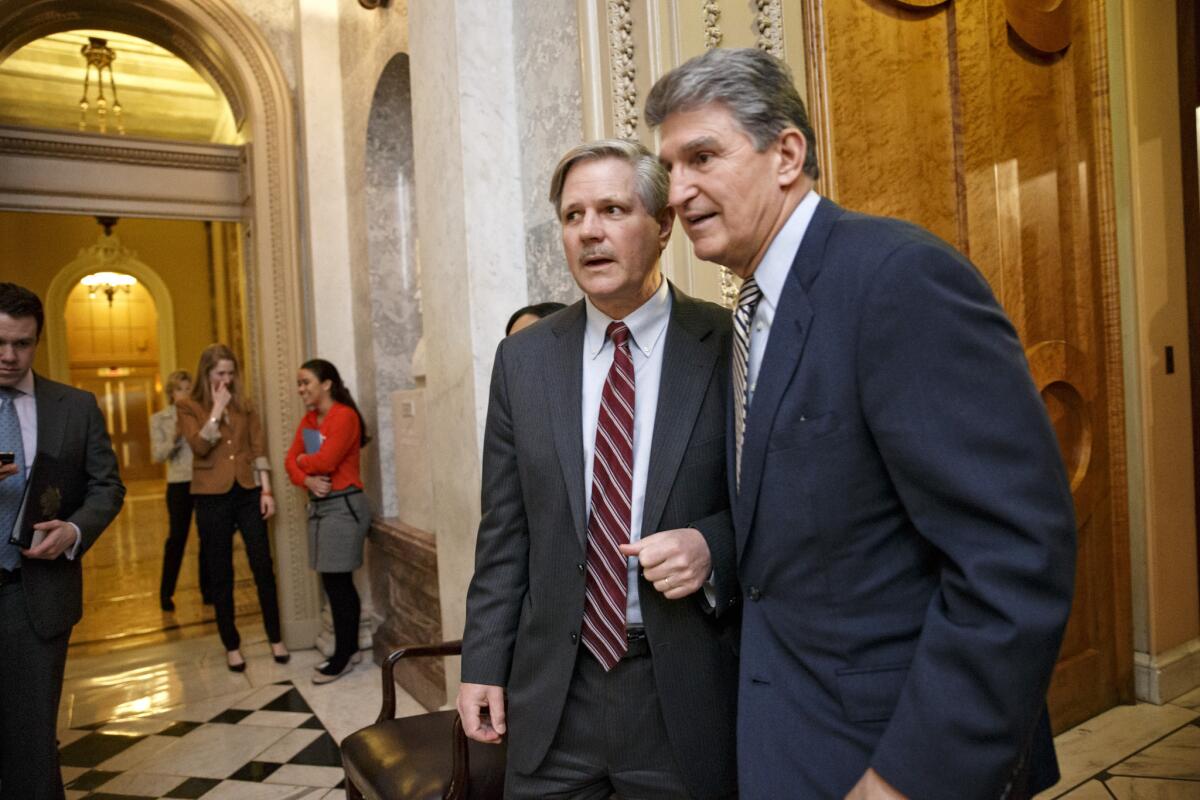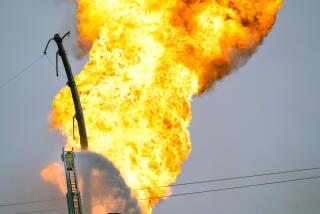Keystone XL oil pipeline: What you need to know about the dispute

- Share via
One of the biggest environmental controversies of the Obama administration got locked up in Congress again this week, when the Republican-controlled Senate failed to override President Obama’s recent veto of legislation that would have forced a decision on the Keystone XL pipeline.
From the halls of Congress to courthouses in heartland states, the project has created a stark divide. Critics believe the planned 1,179-mile pipeline undermines efforts to slow climate change and could threaten a crucial aquifer. On the other hand, construction of the pipeline would undoubtedly create jobs. But what then?
With debate over the pipeline nearing its peak, here’s some background:
What is the Keystone XL pipeline?
Its genesis was in the early 2000s, when oil prices rose and the extraction of petroleum from the remote tar sands in northern Canada became lucrative. Oil companies needed a quick way to transport the oil to refineries on the Gulf Coast, and they argue that a pipeline is the quickest, cheapest, safest way. TransCanada Corp., a Calgary-based energy infrastructure firm, hopes to extend a 36-inch-wide pipeline 1,179 miles from Alberta, Canada, to Steele City, Neb. The company estimates it will cost about $8 billion and will transport 830,000 barrels of oil each day to refineries in Texas.
Keystone XL is the last of four phases of a larger Keystone pipeline system.
In 2008, TransCanada received approval from the Bush administration for an initial phase, as well as authorization from several states along the route of one part of the pipeline. That first phase connected 2,147 miles of pipeline between Hardisty, Alberta; Steele City, and Patoka, Ill. It was completed in 2010. The second phase added about 300 miles between Steele City and Cushing, Okla. That was completed in 2011. A third phase in 2014 connected 487 miles of pipeline from Cushing to Port Arthur, Texas. (A smaller lateral extension from Port Arthur to Houston is scheduled to be completed this year.)
What are tar sands, and how are they different from oil transported by other pipelines?
Tar sands, also known as oil sands, are a mixture of mostly sand, clay, water and a thick, viscous substance called bitumen. Bitumen is made of hydrocarbons and is used to produce gasoline and other petroleum products.
Extracting bitumen from tar sands — and refining it into products like gasoline — is costlier and more difficult than extracting and refining liquid oil.
What is the argument for constructing Keystone XL?
TransCanada notes that the pipeline could help reduce the amount of oil the United States imports from the Middle East and South America.
There are other economic benefits: A U.S. State Department report estimates that about 42,000 jobs will be created during its construction. However, the same report notes that only 35 of them would be permanent.
A pipeline ships faster than trains, which in any case don’t have the capacity to handle as much oil as a pipeline. And pipeline backers say trains are more hazardous than a pipeline because of the risk of accidents and oil spills. Recent accidents in West Virginia, South Dakota and elsewhere have been used as ammunition by pipeline supporters.
Why has it been so controversial?
Nebraska has been a key area of controversy. On its current proposed path, the final phase of the pipeline passes northeast of the Nebraska Sandhills and over the Ogallala Aquifer, a 225,000-square-mile underground pool that runs from South Dakota to Texas. Environmentalists and ranchers fear that leaks could contaminate the aquifer, which provides drinking water to millions of Americans in heartland states. TransCanada notes the route of the pipeline runs well east of most of the aquifer.
Climate change is another issue. Greenhouse gas emissions are at least 8% higher for oil extracted from tar sands than conventional crude, and possibly more. Conservationists argue that money and time spent extracting oil could be used on more climate-friendly sources of energy, such as wind and solar.
Environmentalists also argue that oil sands crude is more corrosive and toxic than conventional crude oil, therefore making a spill more damaging. TransCanada has pointed to other scientific reports refuting this.
What was going on in the Nebraska court case?
A 2012 law allowed Nebraska’s governor at the time, Dave Heineman, to bypass the state’s Public Service Commission and give the pipeline a go-ahead through the state. A year ago, a state court ruled that this law was unconstitutional, leaving the pipeline with no approved route through Nebraska. The state Supreme Court reversed that decision in February, ruling that the governor can indeed approve the pipeline’s route. The decision improved prospects for the pipeline, but it still needs federal approval.
Will the Keystone XL pipeline make the U.S. less dependent on foreign oil?
TransCanada says yes. Of the more than 15 million barrels of oil the U.S. consumes each day, about 60% are imported from countries like Saudi Arabia and Venezuela. TransCanada says it can displace much of the higher-priced oil that Gulf Coast refineries currently import from abroad.
Also of note: About a quarter of the pipeline’s capacity is slated for crude oil produced in the Bakken region of North Dakota and Montana.
Will oil transported through Keystone XL be exported?
Many opponents of the pipeline argue that oil will be transported out of the country. Last fall, while in Australia, Obama described the pipeline as shipping “Canadian oil to world markets, not to the United States.” But Gulf Coast refineries have signed long-term contracts for Keystone oil, and many experts believe they will end up refining most if not all of the oil shipped through Keystone.
What are the transport alternatives if the pipeline isn’t completed?
Trains are the main alternative, but the rail system doesn’t have the capacity for the 830,000 barrels of oil the pipeline is expected to carry each day. Trucks are even slower. In 2013, the United States shipped about 8.3 billion barrels of crude oil, according to the Assn. of Oil Pipelines. Trains carried only about 291 million barrels of oil that year, according to the Assn. of American Railroads.
What is the political split on this issue?
A 2014 Pew survey found that 61% of Americans support construction of Keystone XL, while 27% are opposed. Among Republicans, 84% support construction but only 49% of Democrats favor it.
Why did President Obama veto a bill that would have expedited the pipeline’s construction?
Because the pipeline crosses an international border, the U.S. State Department is reviewing the proposal to decide whether it serves the United States’ national interests. Obama has consistently said that he would allow the review to run its course before he decides whether the pipeline should go forward. However, Republicans in Congress want to bypass that process and issue an immediate permit. A measure that would have forced Obama to make a decision on the pipeline passed the Republican-controlled Congress in February. It was among the first measures passed by the new Congress after Republicans saw sweeping victories in the midterm election.
Obama, as promised, vetoed the measure. The State Department continues to review the benefits and risks associated with the pipeline plan. That review should be completed this year. Obama could still offer a permit to green-light the pipeline once the State Department process is complete.
What’s next in the pipeline debate?
In the short term, Republicans have vowed to attach a version of the Keystone bill to a future appropriations measure, which would make it difficult for Obama to veto.
More to Read
Get the L.A. Times Politics newsletter
Deeply reported insights into legislation, politics and policy from Sacramento, Washington and beyond. In your inbox three times per week.
You may occasionally receive promotional content from the Los Angeles Times.











